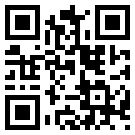Model Design & Manufacture
Based on the the test section dimensions (width 2.4 m, height 2.0 m), the wing span of transport aircraft configurations should not exceed 1.56 m for full-span models and 1.3 m for vertically mounted semi-span models. For combat aircraft models, the corresponding values are 0.85 m and 0.7 m, respectively. The details on model sizing criteria, design details, materials, fasteners and the overall safety procedure is provided in the ETW Model Design Handbook.
The development work for models suited for ETW’s cryogenic environment started as early as 1979 and the first ETW models were built during the period from 1989 to 1994 including very detailed studies of materials, fasteners, instrumentation, coatings, handling, fabrication, etc.. These first models were successfully tested in the early campaigns of ETW and since then vast experience has been gained.
Nowadays, model design, manufacture and test preparation of cryogenic models entails only slightly more effort than that for conventional models. ETW can provide model material forged to the main dimensions of the wings and fuselage in a similar cost range to normal high quality steel. The bolts and screws required for model assembly have been intensively tested and can be provided by several companies. Model manufacture time is normally in the order of 4 to 6 months, depending on the complexity of the model. Pre-design work is typically completed by the Client. ETW has contacts with model manufacturers who can also provide detailed design work. During the design period, ETW provides advice and support to Clients to evaluate critical model components and handling techniques.
In order to optimize model configuration changes, it is necessary to discuss the individual changes in detail with ETW specialists. Spending additional design effort to suppress bolt heads at the model surface sees immediate benefits during the configuration changes. As significant time can be saved during these handling procedures by avoiding extensive filling and grinding exercises, the overall test campaign cost can be minimized. The required surface finish of the models is determined by the Client taking into account the test objectives and test envelope. ETW is able to provide detailed information to assist in defining the final surface finish for the model. As a general guideline, a model surface with laminar flow requires a surface finish of less than Ra = 0.2 μm, if tested up to a Reynolds number of 40 million.
Optional One-Stop Shop Service
To provide convenient and efficient testing service and to ease access, ETW optionally offers a one-stop service including model design, manufacturing, rigging and operation support. The model design and manufacturing is subcontracted to partners, who have extensive knowledge and long-term experience on designing and manufacturing of highly complex, smart models, both for ambient and cryogenic test conditions. ETW has established framework agreements with its partners to ensure the highest quality service within time and budget, as well as continuous improvements and innovations towards minimal lead and testing time. Supported by ETW and its partners, Clients may assess the trade-off between model capability/cost and productivity and opt for a turnkey solution for a remotely controlled (R/C) horizontal tail plane, as it has already been applied e.g. in the CleanSky project "HiLamBiz". More R/C solutions have been developed within the German LuFo research projects "CryoMMS" and "ISL-SMA".
To provide one-stop shop service, ETW has established a framework agreement with Deharde GmbH, Varel, Germany.


